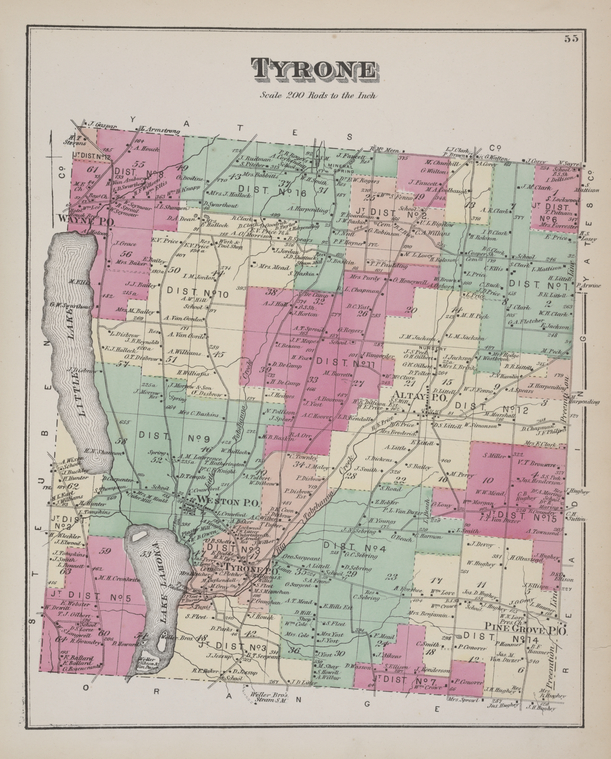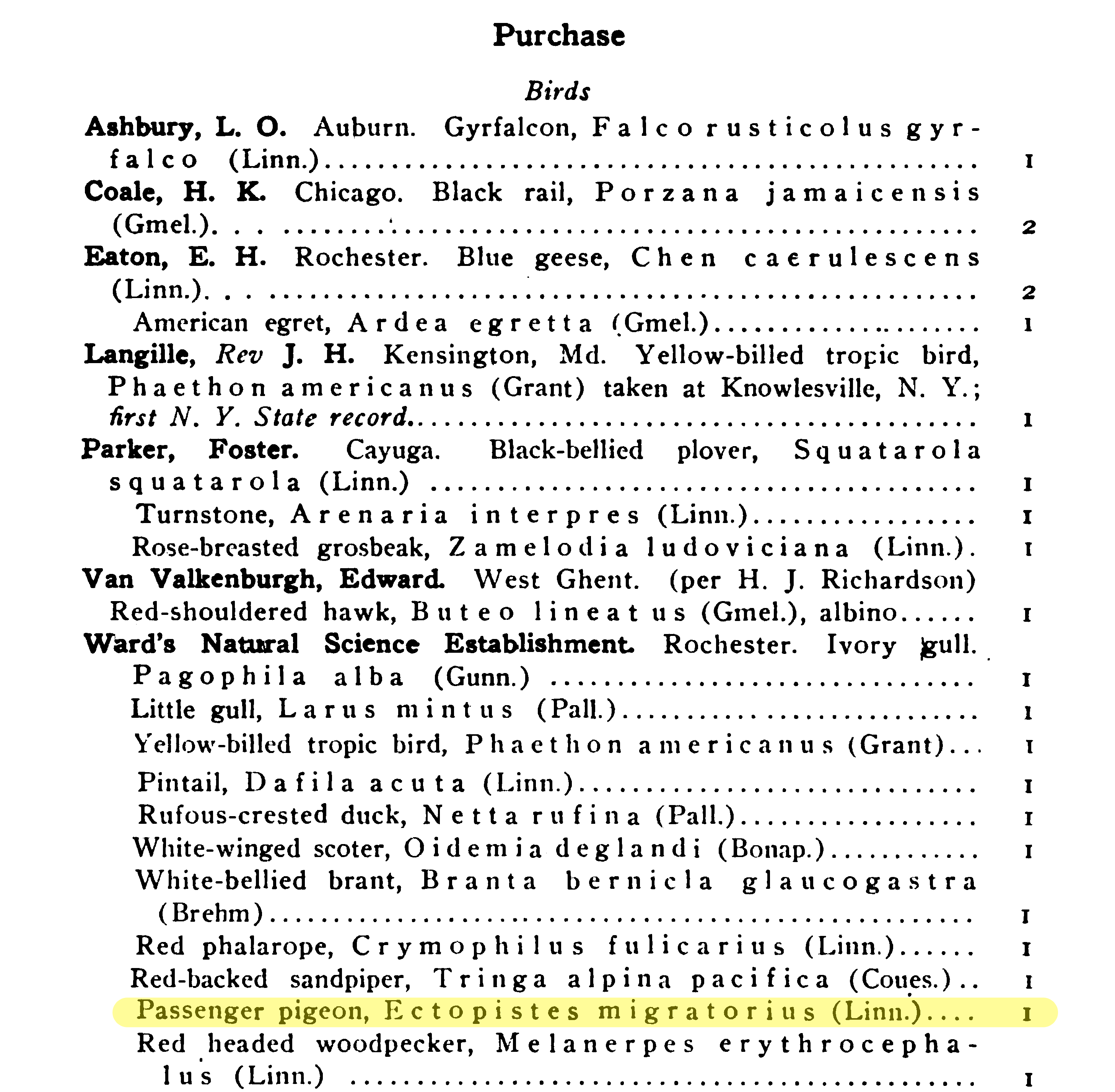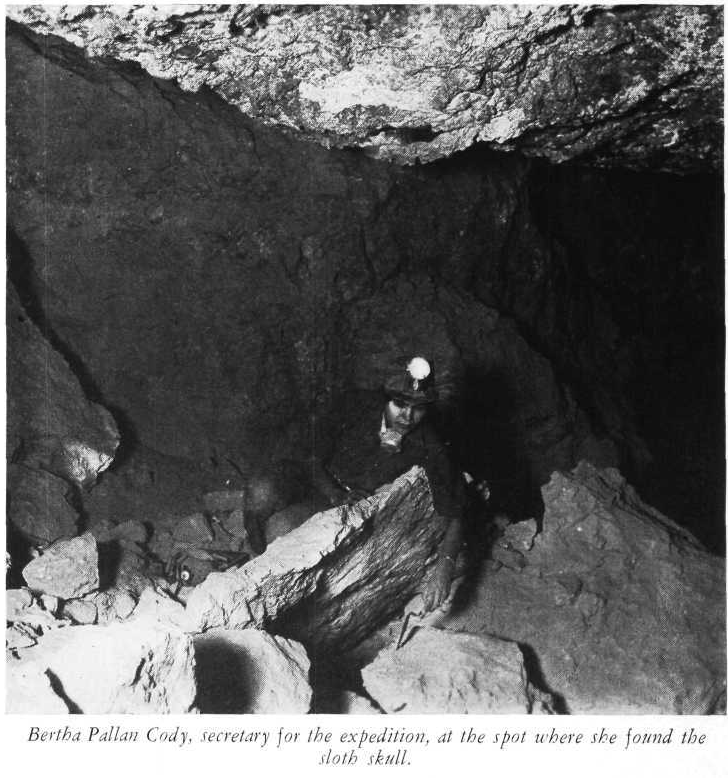Open Access Maps
The New York Public Library has scanned and released 20,000 historical maps under a Creative Commons license, including this 1874 map of Tyrone Township showing Lamoka Lake.
That’s a low resolution map below, go to the NYPL Map Warper to see this in high resolution. The library is crowdsourcing the georectification of these maps, which you can also do at the Map Warper.
OpenCulture.com actually explains the georeferencing part better than the NYPL does. Essentially, you can can overlay the historic maps on modern maps, like in Google Earth. Yes, you can download them as .KML files.

Stupendous! The ROM is bringing its Passenger Pigeons out of Storage
New research question: Is it possible to write an article about passenger pigeons without using the adjective “stupendous”? This article in The Star uses it, while talking about the Royal Ontario Museum’s plan to put some of their 153 stuffed Ectopistes back on display, as well as how the DNA from one of their birds is being used in an ambitious plan to recreate the passenger pigeon.

Best. Publicity Stunt. Ever. (Holy Grail category)
Visitors swamped the museum at the San Isidro Basilica in Spain after two authors published a book claiming a goblet at the basilica is the Holy Grail. It’s not clear yet if the basilica was informed of the stunt prior to publication of the book, or if they were able to raise (or start charging) admission rates before the crowds arrived. Probably not, since they were unable to cope with the demand to see the goblet and have temporarily taken it off display.
Take your pick of news reports covering the story, like this one at the Guardian.
If you need to see The Holy Grail and can’t make it to San Isidro, you can visit the Cloisters Museum in New York City and view another The Holy Grail, a.k.a. the Antioch Chalice, which is either the real Grail, or maybe a lamp. The provenience of that one seems a bit sketchy, too.

Small Vehicles for Overlanding?
A thought-piece on small crossover SUVs for overland travel has some interesting tidbits of information, such as:
The diminutive Lada Niva was the first vehicle to drive to the North Pole, although that discussion raises hackles with Top Gear fans. First or second, it went there, which is an accolade only Toyota can match.
A parachute was involved, which may help explain the controversy. And the Fiat Panda helps show that ground clearance isn’t everything.

Which leads them to ask how good might the newly announced Jeep Renegade actually be for overlanding?

Goblin Rock Topplers Avoid Prison
These guys got off easy:
Men Charged With Toppling 170-Million-Year-Old Rock Formation Avoid Jail Time

Shooting “doves” in Florida, A.D. 1565
An earlier record of Europeans shooting passenger pigeons (“doves”) that Joel Greenberg found but was not able to get into his book:
A second voyage left France in 1564 under the command of Rene Laudonniere. At the mouth of the St. Johns River where Jacksonville now stands, he founded Fort Caroline on June 22. It, too, would fail, as the Spanish, aware of France’s intentions, sent a fleet about a year later to slaughter or imprison most of the inhabitants and destroy the structures. Laudonneire managed to escape, however, and wrote of his experiences. Sometime between January 25, 1565 and May 1565, there occurred the earliest instance of Europeans killing passenger pigeons that I know of:
“In the meantime, a great flock of doves came to us, unexpectedly and for a period of about seven weeks, so that every day we shot more than two hundred of them in the woods around our fort.” ( Rene Laudonniere, Three Voyages (translated, edited, and annotated by Charles E. Bennett), Gainesville: The University Presses of Florida (1975): 114.
http://www.birdzilla.com/blog/2013/12/29/earliest-instance-of-europeans-killing-passenger-pigeons/
The exact location of Fort Caroline has never been identified, although at least one archaeological attempt to find it is underway. Recently, some people have even claimed, apparently without showing much evidence, that it was actually in Georgia.
Where Could You Buy a Passenger Pigeon in 1908?

In 1908 the New York State Museum purchased a passenger pigeon from Ward’s Natural Science Establishment in Rochester, NY (NYSM 1908:134). The late date of this acquisition is interesting. By this time, the species was considered extinct in the wild. Martha, the last known passenger pigeon, of course, died in captivity in 1914. The latest confirmed killing of a passenger pigeon that Schorger (1955) was aware of occurred in 1900 in Ohio. Greenberg (2014) has since identified two more recent records: a passenger pigeon killed in Illinois in 1901 that survives as a taxidermic mount at Millikin University, and a pigeon killed in Indiana in 1902. That specimen has not survived.
There were, however, unconfirmed sightings of passenger pigeons in the wild. Most, if not all of these, were likely misidentifications of the smaller mourning dove. Schorger has pointed out how even experienced observers could make such a mistake.
The latest confirmed kill of a passenger pigeon in New York was in 1899. Yet a passenger pigeon nest was reported from Monroe County, New York, in 1904 and in 1907 Edmund Niles Huyck saw a live pigeon in Albany County and naturalist John Burroughs recorded sightings of flocks of pigeons in the Hudson Valley (Greenberg 2014; Steadman 1996).
Is it possible that a collector working for Ward’s killed a wild passenger pigeon that was then sold to the Museum? Perhaps, although Ward’s Natural Science was a major supplier of passenger pigeons and all sorts of animals to museums and other institutions. It seems more likely that the State Museum bought a specimen prepared by Ward’s years earlier that had been sitting unsold in a warehouse. In fact, another source, Frank H. Ward himself, tells us that the company obtained their passenger pigeons the same way many other people did: by buying them in public markets in the 1880s. At the time of the death of Martha, the last passenger pigeon, in 1914, Ward’s still had eight skeletons in stock (Pitelka and Bryant 1942).
The New York State Museum has several passenger pigeons in their collections — ten mounted skins according to David Steadman, the former curator of birds there. An earlier report listed five mounted specimens and two study skins at the museum, of which only one, a mounted specimen collected in 1895 from Orleans County, New York, had reliable provenience (Stoner 1940).
The pigeon from Ward’s, whether a stuffed taxidermic mount or a mounted skeleton, is presumably still at the NYSM. Their products would have had a label with the name of the company, but this would not be considered provenience data, as it would not have the date and location the bird was actually obtained. A search of the museum’s archives and an examination of the bird itself might produce more information. The University of Rochester curates the archives of the Ward’s company (link), but a fire in 1930 destroyed many of the earlier records, so it may not possible to ever determine if this bird was truly one of the last wild passenger pigeons.
References:
Greenberg, Joel
2014 A Feathered River Across the Sky: The Passenger Pigeon’s Flight to Extinction. Bloomsbury USA.
New York State Museum
1908 Fourth Report of the Director of the Science Division including the 61st Report of the State Museum, the 27th Report of the State Geologist, and the Report of the State Paleontologist for 1907. New York State Museum Bulletin 121. Albany.
Pitelka, Frank A., and Monroe D. Bryant
1942 Available skeletons of the passenger pigeon. The Condor 44:74-75.
Schorger, A.W.
1955 The Passenger Pigeon: Its Natural History and Extinction.
Steadman, David W.
1996 …And live on pigeon pie: the passenger pigeon finally expired at the Victorian dining table. New York State Conservationist. April, pp. 21-23.
Stoner, Dayton
1940 Unreported New York State specimens of passenger pigeon. The Auk 57:415-416.
Arthur, Beulah, and Bertha: The Extended Parker Family

Discovered another Trowelblazers post with a Lamoka connection, which led me into the interesting and complex family history of Arthur Parker.
Bertha “Birdie” Parker Pallan Thurston Cody was the daughter of Beulah Tahamont Parker and Arthur Parker, New York State Archaeologist and Rochester Museum director. She had an interesting and complicated life of her own, working as an archaeologist/anthropologist at the Southwest Museum in Los Angeles, California for many years. That was only part of her life, however.
DIY Data Mining
Following a trail from Open Access Archaeology led to this practical guide to extracting data from documents, whether paper or digital. Whether you want to get the numbers from one table in an article cleanly into Excel, or you just got the Wikileaks download, you can find the tools in Jonathan Stray’s guide.

